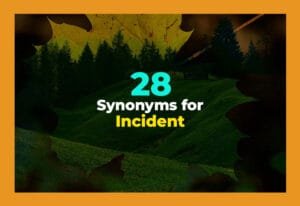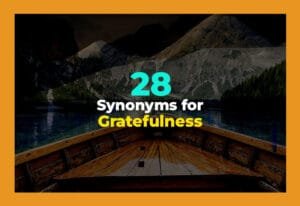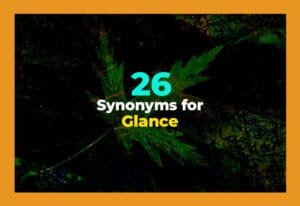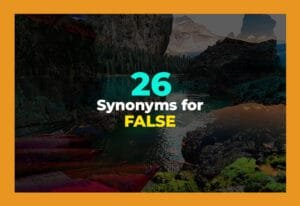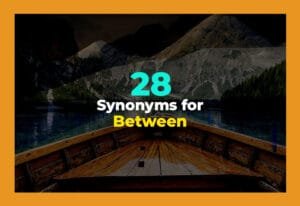You know when something just doesn't feel right, and you want to shout it out loud? That's what protest is all about! Let's have fun exploring 25 different ways to say protest, each with easy explanations and real-life examples you'll get.
1. Demonstration
A demonstration is when people gather together to show they don't like or agree with something. It's often done in public places, like streets or parks. For example, people might hold a demonstration to ask for cleaner air in their city. Demonstrations can include holding signs, chanting slogans, and walking in groups. The goal is to get attention and tell leaders what the people want. Demonstrations are peaceful most of the time but very powerful because they show many people feel the same way.
2. March
A march is when people walk together to show their feelings about an issue. It is a way to protest by moving through a city or town. For example, thousands of people might march for equal rights. Marches are often planned and have a clear path. They can be loud with chants or quiet with signs. A march helps people see the group's strength because many people are walking for the same cause. Marching can make news and get others to support the idea.
3. Rally
A rally is a big meeting where people come together to show support or protest. It usually has speeches, music, and a crowd of people. For example, there might be a rally to stop a new law that some think is unfair. At a rally, people feel united and strong because they share the same goal. It helps spread a message clearly. Rallies can be exciting and full of energy, making everyone feel like they belong to a team working for change.
4. Sit-in
A sit-in is a quiet way to protest where people sit in a place they usually are not allowed. For example, students might do a sit-in at their school to demand better lunches. Sit-ins show that people are serious and peaceful. They don't leave until their voice is heard or changes happen. This kind of protest is calm but powerful because it stops normal activity. Sit-ins make it hard for others to ignore the problem.
5. Boycott
Boycott means refusing to buy or use something to show you don't agree with how it is made or who runs it. For example, people might boycott a company that pollutes the environment. By not giving money to the company, they want it to change. Boycotts are quiet protests but can hurt the business enough to make a difference. It's a smart way to show anger or disappointment without shouting or marching.
6. Strike
A strike is when workers stop working to protest about bad conditions or unfair pay. For example, teachers might go on strike to ask for higher wages. During a strike, no work happens, which can cause problems for the business or school. Strikes are strong protests because they show how important the workers are. They often try to make bosses listen and fix the problem. Strikes can last a short or long time depending on the problem.
7. Petition
A petition is a paper or online list where many people write their names to show they want change. For example, citizens might sign a petition to save a park from being closed. A petition helps prove that lots of people care. It is a peaceful way to protest because it uses words, not noise or crowds. Petitions are given to leaders to show strong support for an idea or problem. It's an easy way for anyone to join in.
8. Banner
A banner is a big sign with words or pictures used during protests to share a message. For example, protesters might carry a banner that says "Save Our Forests". Banners help people understand the reason for the protest from far away. They can be colorful and creative, making the protest more eye-catching. Using a banner is a simple way to tell a story or demand action without talking. It's like a loud message written on fabric.
9. Sit-down
Sit-down protests are when people sit and refuse to move to show they are unhappy with something. For example, workers might do a sit-down to stop machines until they get better pay. This stops work and shows how serious they are. It's a quiet protest but can cause big changes because it stops normal business. Sit-down protests are a peaceful way to say "We want change now" without violence.
10. Demonstrate
To demonstrate means to show your feelings openly about something, often by gathering or speaking out. For example, students might demonstrate against unfair school rules. Demonstrating can be loud or quiet but always shows a clear message. It can be walking, chanting, or showing signs. Demonstrating helps get attention from others who may not know about the problem. It's a way to make people stop and listen.
11. Pickett
To picket means standing or walking outside a place to show you don't like what is happening there. For example, workers might picket outside a factory to protest bad conditions. People hold signs and talk to others passing by. Picketing makes it hard for business to ignore the problem. It's peaceful but firm, showing that workers want respect. Picket lines are common during strikes or fights for better treatment.
12. Outcry
An outcry is a loud reaction from many people who feel angry or upset about something. For example, there might be an outcry when a new law is seen as unfair. Outcry is not always planned but happens when news spreads quickly. People show their feelings through talking, shouting, or even small protests. It is a strong sign that many people want things to change. Outcry can help make leaders listen and act fast.
13. Resistance
Resistance means fighting back or saying no to something unfair or wrong. For example, people showed resistance against unfair taxes by refusing to pay. Resistance can be peaceful or active, like protests or saying no to rules. It is about not accepting bad treatment. Resistance helps protect rights and show strength. It can happen in small groups or many people coming together to say "No more."
14. Demonstrative Action
Demonstrative action means doing something to show strong feelings about a problem. For example, people blocking a road to stop traffic is a demonstrative action. It's a way to get attention quickly by showing how serious the issue is. Demonstrative actions can be noisy or silent but always clear. They help people notice and think about the problem. This type of protest is often short but very powerful.
15. Revolt
A revolt is when people strongly fight against rules or leaders they think are unfair. For example, citizens might revolt if a government treats them badly. Revolts are bigger and louder than simple protests. They often involve many people and sometimes cause big changes. Revolts show deep anger and want for freedom or justice. They are serious actions and can change history. People join revolts when peaceful ways don't work anymore.
16. Campaign
A campaign is a planned effort to support or oppose something over time. For example, a campaign to clean up a river might include protests, petitions, and talks. Campaigns are long and use many ways to make change. They help spread the message slowly and strongly. Campaigns show commitment because people keep working until their goal is reached. They can involve many people and help solve big problems.
17. Disobedience
Disobedience means not following rules to show that they are unfair. For example, people might refuse to pay taxes as an act of disobedience. It is a way to protest quietly but clearly. Disobedience is peaceful but firm. It makes leaders think about changing the rules. This kind of protest is used when people believe rules are wrong and want to fix them by not obeying.
18. Outbreak
An outbreak means a sudden start of many protests or problems. For example, there might be an outbreak of protests after a bad decision by leaders. It happens quickly and shows strong feelings from many people. Outbreaks can be surprising and spread fast. They show how important an issue is to many people. Outbreaks can change how things are done because they force attention.
19. Sit-out
A sit-out is when people sit somewhere and refuse to leave as a way to protest. For example, students might do a sit-out in a school office to ask for better rules. Sit-outs are peaceful but stop normal work. They show seriousness because people stay in one place to be heard. Sit-outs help make leaders think and sometimes change their minds. It's a calm way to say "We want change now."
20. Walkout
A walkout is when people leave a place, like work or school, to protest something. For example, students might do a walkout to show they want safer schools. Walking out stops what is happening and shows strong feelings. It's a quick and clear way to say "We disagree." Walkouts get attention fast because many people leave at once. It's peaceful but powerful.
21. Strike Action
Strike action means workers stop working to fight for better pay or conditions. For example, nurses might use strike action to demand more safety at hospitals. It's a strong way to show problems. Strike action makes leaders feel pressure because work stops. It helps workers get better treatment. Strike action can last a short time or longer depending on the problem.
22. Protest March
A protest march is a group walking together to show they don't like something. For example, people might do a protest march against unfair laws. It's a way to be seen and heard. Protest marches often have signs and chants. They show many people care. Marching is a clear way to say "We want change." It helps get attention from others and can be very powerful.
23. Civil Disobedience
Civil disobedience is when people break certain rules peacefully to show they want change. For example, people might sit in a place they are not allowed to protest unfair laws. It's a smart way to show problems without violence. Civil disobedience can help leaders see that rules need to change. It's about standing up for what is right calmly but firmly.
24. Outraged
Being outraged means feeling very angry about something wrong. For example, people are outraged when they hear about unfair treatment of workers. Outrage can lead to protests or talking loudly. It shows strong feelings that things must change. When people are outraged, they want others to listen and help fix the problem. It is a powerful feeling that can start action.
25. Discontent
Discontent means feeling unhappy or not satisfied with how things are. For example, there might be discontent if a community feels ignored by leaders. Discontent often leads to protests or speaking out. It shows that people want better treatment or answers. When discontent grows, more people join together to demand change. It is the start of many protests and shows real feelings inside a group.

I hope this list helps you see just how many ways there are to say protest and how powerful each one can be. Remember, using your voice can bring change, no matter how you say it!

